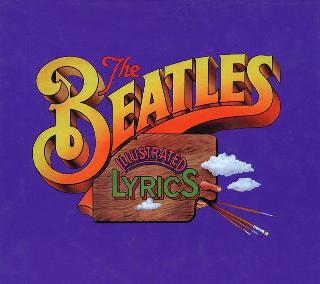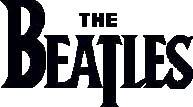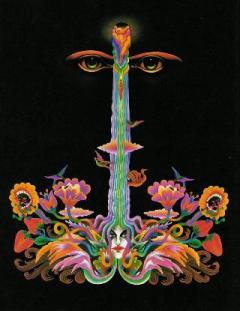Index
Home
Vorige
Here Comes the Sun
Composer(s) : Harrison
Year : 1969
Chords/Tabs: Here Comes the Sun
Notes on "Here Comes The Sun" (HCTS)
KEY A minor
METER 4/4 with 11/8 and 7/8 in the bridge
FORM Intro -> Refrain -> Verse -> Refrain -> Verse -> Refrain ->
Bridge (Instrumental) ->
Verse -> Refrain -> Refrain -> Outro (w/complete ending)
GENERAL POINTS OF INTEREST
Style and Form
- Folksy influences on "Here Comes The Sun" are apparent in the series of
Verse/Refrain pairs, the prominent role for acoustic guitar, and the
generally laid back mood.
- The use of a middle bridge, offbeat metrical patterns and chord choices
bespeak several other, dare we say Beatlesque, influences.
Melody and Harmony
- The Verse/Refrain tune is constrained almost exclusively to the pentatonic
scale pattern running from E up to C#; i.e. scale steps 5, 6, 1, 2, 3. The
danger of melodic monotony is avoided here by varying the chord progression
when certain parts of the tune are reiterated; e.g. the title phrase as it
appears in the first two lines of the refrain.
- Harmonically the song is based heavily on I, IV (or ii) and V, though a
relatively large number of individual chords appear over the course of the
song.
- The verse and refrains both make liberal use of the V chord for
cadences, but this is balanced out in the bridge by a momentary fixation
on chord progressions which make a root move of a 4th downward.
Arrangement
- Primary elements on the backing track are acoustic guitar, synthesizer,
bass, and drums, in order of appearance. The synth is used here more to
mimic the sound of woodwinds or strings than for its stranger noisemaking
capabilities.
- The vocal parts sound as if all sung by George on overdub, with backing
vocal parts used here primarily for their "bold font" highlighting effect.
- The arrangement is relatively homogenized though a handful of characteristic
details stand out:
- Staggered entrance of instruments during the first two sections: guitar
followed by synth in the intro, and "piano + strings" effect followed
successively by bass, then drums, in the first refrain.
- Title phrase in the first refrain is sung single tracked in the first
line followed by overdubbing in the second.
- Similarly in the first verse, the first "Little darlin'" is sung plain
double tracked, while the second one is harmonized by the overdub. In
verse 3, the same phrase is harmonized both times.
- The last couple measure of the outro abruptly restore the opening
sound of just guitar and synth in a bookends-like formal gesture.
SECTION-BY-SECTION WALKTHROUGH
Intro
- The intro is eight measures long and features a repeat of the following
straightforward, harmonically open four-measure phrase:
------------------------------- 2X ------------------------------
|A |- |D |E |
A: I IV V
- This passage turns out to be identical to what soon emerges as the Verse
section, but the stripped down, incomplete exposure of the actual tune avoids
giving away too much too soon.
Refrain
- The refrain is an unusual nine measures in length and parses into
two unequal phrases, making a 5 + 4 pattern:
|A |- |D |B |
I IV V-of-V
***** ***** ***** *****
1 2 3 1 2 3 1 2|3 1 2 3 1 2 3 4|
bassline: D C# B A
|A |b6/5 A6/3 b | A E |A |
I ii I ii I V I
|E |
V
- The harmonic shape is generally closed, though the section ends off
with another V chord leaving it "open," strictly speaking.
- The much Beatles-favored V-of-V to IV progression (check out
EDAW and
SPLHCB
for starters), with its concommitant cross relation, is reversed
in this case.
- The second phrase is rhetorically extended by the use of a sophisticated
rhythmic trick in which even eighth notes are accented as if triplets against
the backbeat. These groups of three 8th notes are sequenced in a manner
that (surprise!) rationally "adds up" correctly over the course of two
measures, but which in the meanwhile, creates an intense moment of metrical
disorientation and syncopated harmony.
The arithmetic basis of this gambit is the fact that (4 * 3) + 4 = 16; the
latter equal to the number of eighth notes in two 4/4 measures.
Check out
"Good Day Sunshine"
and a snippet of "Martha My Dear" for
applications of similar tricks. In terms of _Abbey Road_ cross-track
resonance, look to both "Because"
and "... Money."
- Dig that heavy downward stepwise bassline underlying the syncopated
phrase!
- The final measure of the refrain that leads into the bridge is
7/8 long instead of a full 4/4. The 7/8 is parsed as 2 + 2 + 3 so
that that final grouping of 3 helps shift metrical gears into the
seemingly slower triplet meter used in the first measure of the bridge
phrase. See below for more on this gear shifting concept.
Verse
- As I said, this is the same as the intro.
Bridge
- The bridge is built primarily out of a 6-fold repeat of the following
three measure phrase which is harmonically open at both ends. Vocals
accompany all but the first iteration. The synthesizer takes on a more
dominant role in the mix over the course of the final 3 iterations.
------------------------- 6X -----------------------
|C G D D6/3 |A |E |
flatIII flat VII I I V
- The meters of these three measures are 11/8, 4/4, and 7/8, respectively.
The special effect of running even 8th notes accented as if triplets against
the grain of the underlying backbeat is carried to a point more reminiscent
of Stravinsky than of the Beatles. Compared to the refrain section of this
song, no attempt is made at all here to make the arithmetic balance out in
the end; quite the opposite.
- It breaks down this way:
- The 11/8 measure parses into 3 + 3 + 3 + 2. You hear it as a wobbly
four beat measure in which the first three beats last 50% longer
than the original 4/4 tempo, but the final beat reverts to that
first tempo. Check out the intro to the Allman Brothers' "Whipping
Post" for essentially the same sleight of hand.
- The 4/4 measure leverages the final beat of the wobbly measure and
briefly re-establishes the first tempo.
- The 7/8 measure parses into 2 + 2 + 3. You hear this as a wobbly
three beat mease in which the first two beats match the first tempo,
but the final beat matches the 50% slower beat seen in the front part
of the wobbly measure.
- George had done something similar with "metrical modulation" back in
"I Me Mine,"
though nothing nearly so complicated as this.
- The final iteration of the bridge phrase foregoes the 7/8 measure in
favor of a full four measures in 4/4 on the V chord, nicely building
up appropriate desire for the resolution to I that will be provided
by the arrival of the final verse.
- Harmonically, this section carries the familiar
"Hey Jude" second half
modal chord progression one step further, giving us what you might call
a "Triple Plagal" cadence that starts yet another perfect fourth around
the circle of fourths than the so-called "Double Plagal."
- I can't help thinking that the reason for George repeating this bridge
phrase over and over again is because the combination of both wicked rhythm
and harmony is just so "cool" that he wants to make sure you don't miss it.
Outro
- The last part of the song provides a double barreled variation on the
familiar three-times-you're-out gambit.
- The first "barrel" consists of an unusual dual repeat of the refrain
followed by the outro proper, which itself is derived from the refrain.
- The second "barrel" consists of the inner structure of the outro proper,
whereby you parse the syncopated phrase at the end of the second final
as eliding with the outro.
- You also just gotta love the quiet elegance with which the final phrase
of the outro both restores the initial instrumentation of the intro while
also taking the opportunity at the last second to make an allusion to
the bridge; yes, the penultimate measure of the song is in the wobbly
11/8 meter and is over a Plagal IV - I cadence.
SOME FINAL THOUGHTS
- The song is surely George's "Pastoral." Its happy and relaxed mood is
a wonderful new point of departure for the composer. It also effectively
set a tone of fresh, new beginnings for the second side of the album.
- This is another example in the Beatles catalog where, back in the days of the
LP medium, the act of physically turning over the record at such a point
used to feel like an uncannily integral part of the listening experience.
- While this this general effect is obviously lost in the era of the CD,
I'm particularly disoriented in this specific case by what seems to be a
much shorter than usual pause on the CD between the end of the last song
on side A and and the start of the first song on side B.
- This can't be an anomaly with my lonesome copy of the compact disc, can it?
But while I'm asking questions, I'm curious to know from listeners out there
who never experienced this album on LP whether or not the break between the
two songs here seems rushed or not?
Regards,
Alan (awp@world.std.com)
---
"I don't really know, but it sounded distinguished like, didn't it?"
120599#183
---
Copyright (c) 1999 by Alan W. Pollack
This article may be reproduced, retransmitted, redistributed and
otherwise propagated at will, provided that this notice remains
intact and in place.
Ook op Abbey Road:
Ook op 1967-1970:
Ook op Love:
(c) 2024 Serge Girard


 (c) Alan Aldrigde, The Beatles Illustrated Lyrics
(c) Alan Aldrigde, The Beatles Illustrated Lyrics